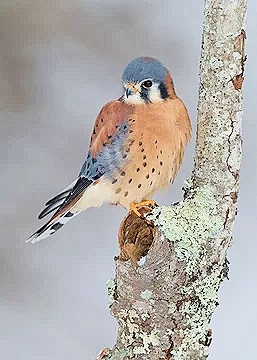The American kestrel is the smallest falcon found in North America, and with the exception of the Seychelles kestrel (Falco araea), the world. Like all members of the genus Falco, American kestrels have dark eyes, a notched beak and unfeathered legs. Males have a rusty back, blue wings and a rusty-coloured tail with a black terminal band. Females have rusty wings, back and tail, all marked with black barring. Both sexes have a dark vertical line running through the eye with white cheek and chin patches. The top of their head is blue with a rusty cap, usually brighter in males than females. |

